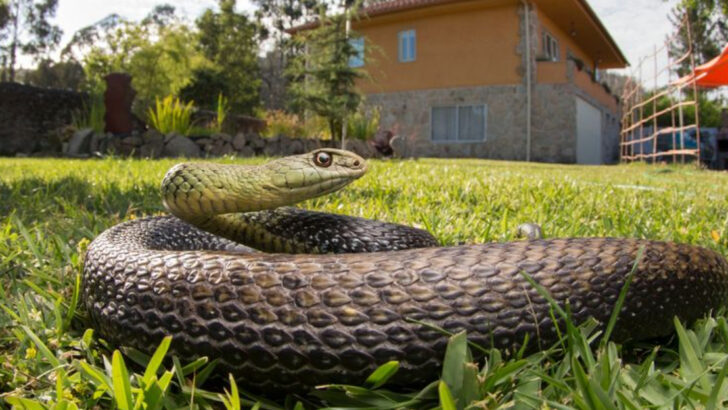Snakes are sneaky, and they might be closer than you think. While they’re a crucial part of the ecosystem, most homeowners prefer to keep them far away from their yard. Unfortunately, some common yard habits unknowingly roll out the welcome mat for these slithering creatures.
From overgrown grass to piles of clutter, certain practices can create the perfect environment for snakes to call your backyard home. Before you know it, they’re lurking in the shadows, and your peaceful space becomes a bit less serene.
Don’t panic just yet! By learning about the mistakes that attract snakes, you can take simple steps to keep your yard snake-free. Let’s explore 13 common blunders that may be drawing snakes to your doorstep—and how to fix them fast.
Leaving Pet Food Outside
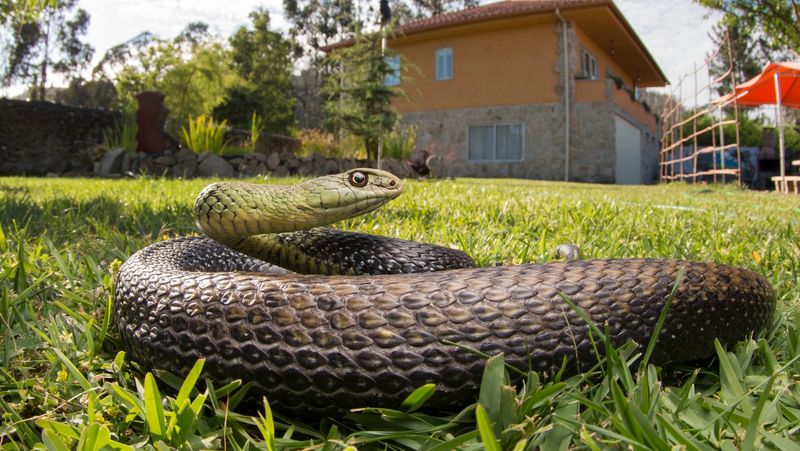
Leaving pet food outside can unintentionally attract a variety of wildlife, including snakes. The aroma of pet food is appealing to rodents, which are a primary food source for many snake species. By attracting rodents, you’re also inviting snakes looking for a meal.
Moreover, pet food can spoil, creating an additional scent lure. Always feed pets indoors or promptly remove any uneaten food outside.
If feeding outside is necessary, do so during the day and clean up immediately. Investing in pest-proof containers can also help minimize this risk and keep your yard snake-free.
Overgrown Grass and Bushes
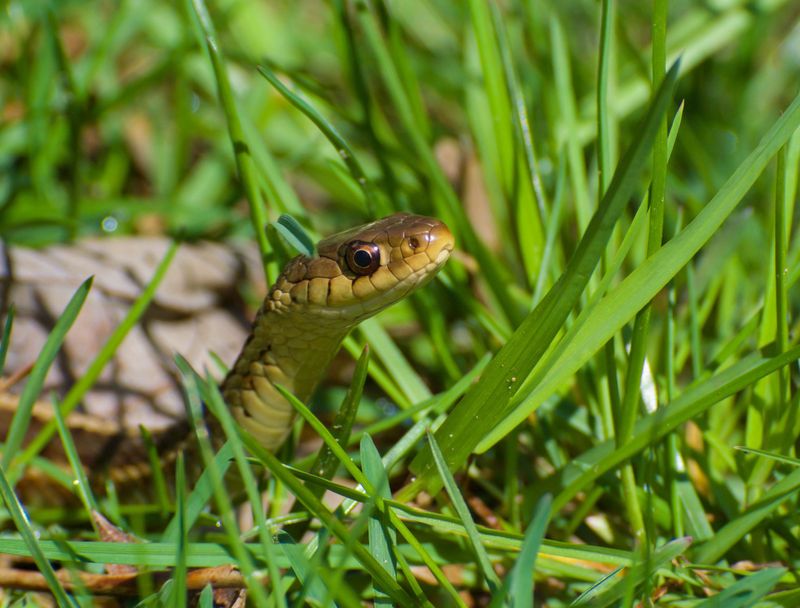
Unkempt grass and bushes offer the perfect hiding places for snakes. Overgrown vegetation provides cover, making it easier for snakes to avoid predators and hunt for prey.
Regularly mowing your lawn and trimming bushes can reduce these inviting conditions. Additionally, maintaining a clear boundary between your yard and any wild areas helps create a less attractive environment for snakes.
It’s also beneficial to remove leaf piles and other debris where snakes might hide. Keeping your yard tidy deters snakes by eliminating their preferred hiding spots.
Rock and Log Piles
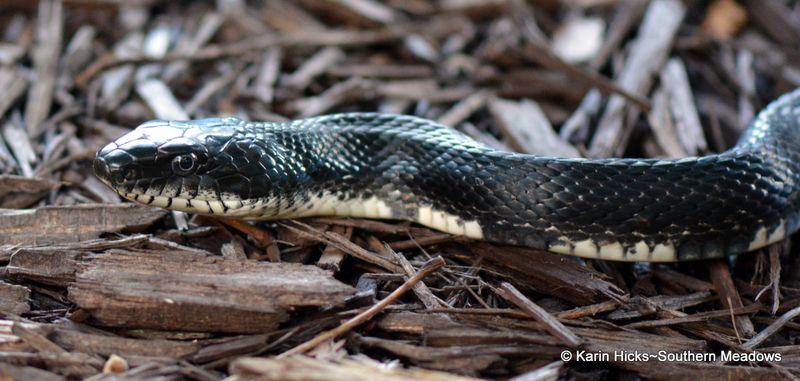
Rock and log piles create ideal habitats for snakes, offering shelter from predators and extreme weather. These structures retain warmth, making them even more attractive to cold-blooded creatures like snakes.
Consider organizing rock features with gaps sealed or using them as decorative elements without creating potential homes for snakes. Similarly, stack logs neatly and away from your home or dispose of them properly.
By minimizing these shelters, you reduce the likelihood of attracting snakes to your yard, keeping the area safe for children and pets.
Standing Water
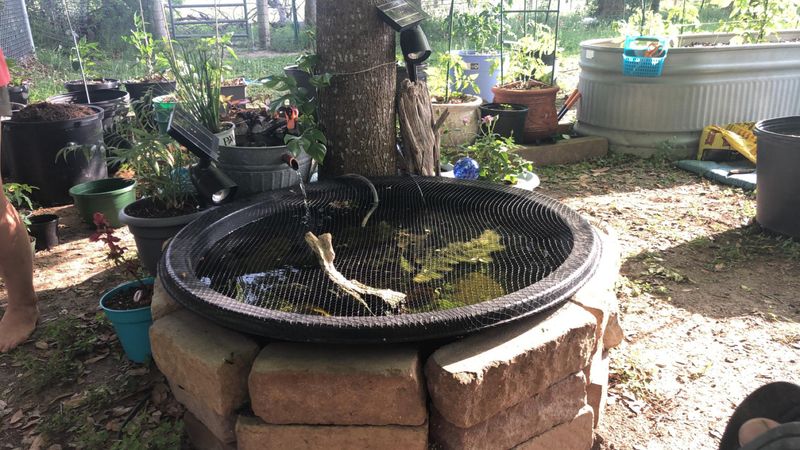
Standing water can draw snakes seeking hydration and the prey that also uses these water sources. Birdbaths, ponds, and improperly drained areas can become magnets for snakes looking for a drink.
Regularly empty or refresh water in birdbaths and ensure proper drainage around your yard. If you have a pond, consider adding a filtration system to keep the water moving, which deters snakes and other pests.
By managing water sources, you’ll create a less appealing environment for snakes and reduce the chance of encountering them.
Compost Piles
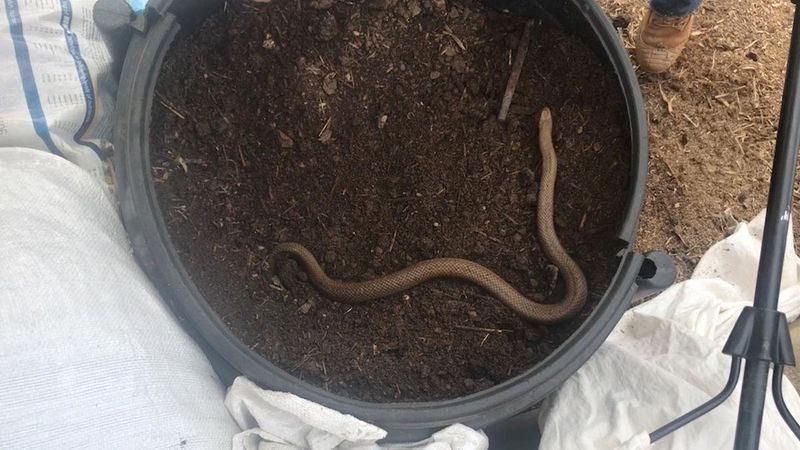
Compost piles can attract snakes by providing food sources like insects and rodents. The warmth and moisture of compost also create a comfortable habitat for snakes.
To minimize this risk, use enclosed compost bins and regularly turn the compost to reduce heat and odors. Placing the compost pile away from your home can further prevent snakes from venturing into living areas.
Managing compost properly keeps your yard less appealing to snakes, enhancing safety for you and your family.
Bird Feeders
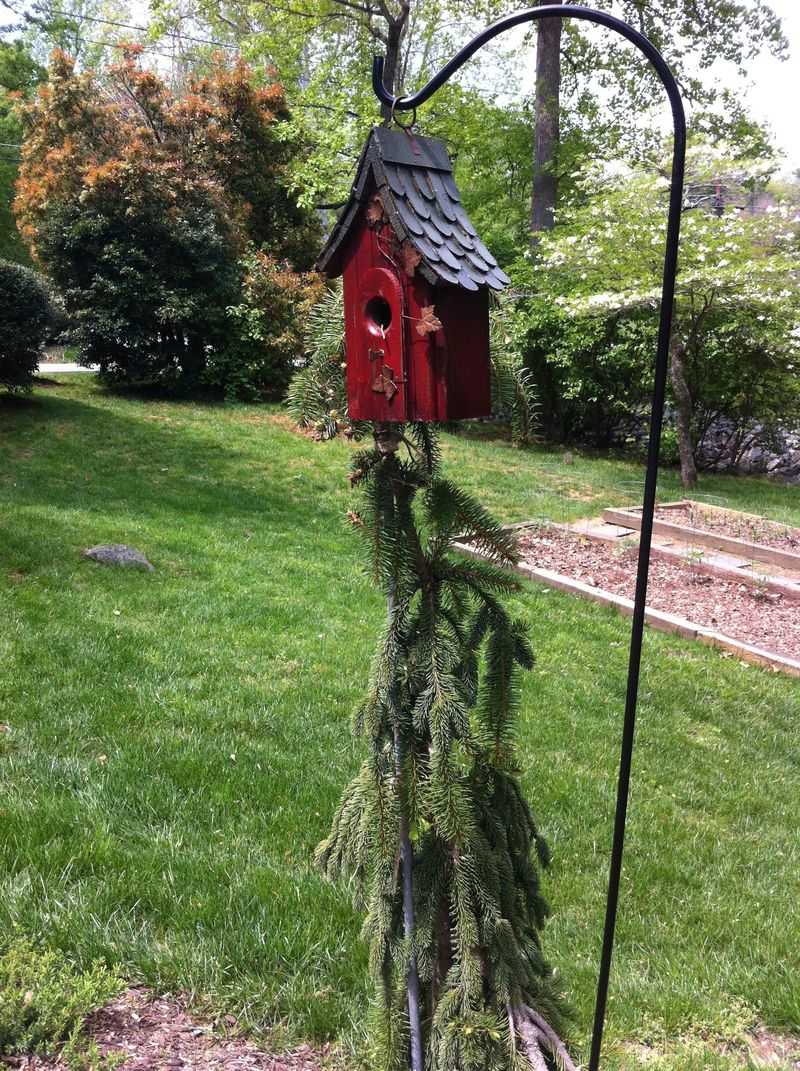
Bird feeders are delightful for birdwatching but can inadvertently attract rodents, which in turn draw snakes. Fallen seeds and nuts provide easy meals for mice and rats.
Position feeders away from the house and use trays to catch spilled seeds to prevent attracting unwanted guests. Regularly clean around feeders and consider seed types less appealing to rodents.
This careful placement and maintenance can help enjoy birdwatching without the risk of inviting snakes and their prey into your yard.
Woodpiles Near Home

Woodpiles situated close to homes serve as excellent shelters for snakes, offering warmth and protection. These stacks can also harbor insects and rodents, further enticing snakes.
To deter snakes, stack wood away from the house and elevate it off the ground. Covering the pile with a tarp can also limit access. By keeping woodpiles tidy and at a distance, you reduce snake encounters and maintain a safer environment around your home.
Dense Ground Cover

Dense ground cover plants can offer excellent concealment for snakes. As they slither through these lush areas, they can easily hunt for prey or hide from predators.
Regularly pruning and thinning ground cover helps reduce the risk of snakes making these plants their home. Choosing alternative landscaping options that provide fewer hiding spots can also contribute to a snake-free yard. By maintaining plants, you create a visually appealing and safer environment.
Untamed Garden Areas

Untamed gardens with weeds and unmanaged plant growth create ideal environments for snakes. They provide cover and attract insects and rodents, which snakes prey upon.
Regularly weeding and maintaining garden areas can reduce these habitats. Incorporate tidy, well-maintained flowerbeds and garden designs that discourage snake habitation.
By keeping garden spaces orderly, you not only enhance their beauty but also minimize the risk of attracting snakes.
Lack of Fencing
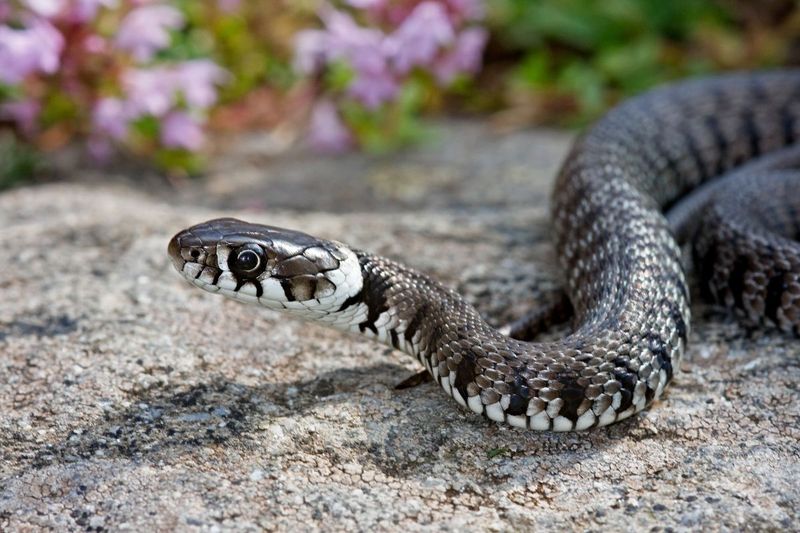
A yard without adequate fencing invites snakes to move freely from nearby wild areas. Proper fencing can act as a barrier, preventing snakes from entering.
Install snake-proof fencing, burying it several inches into the ground and angling it outward. Regularly inspect and repair any damage to maintain its effectiveness.
By creating a secure perimeter, you protect your yard from unwanted snake visitors, ensuring a safer outdoor space for all.
Feeding Wildlife
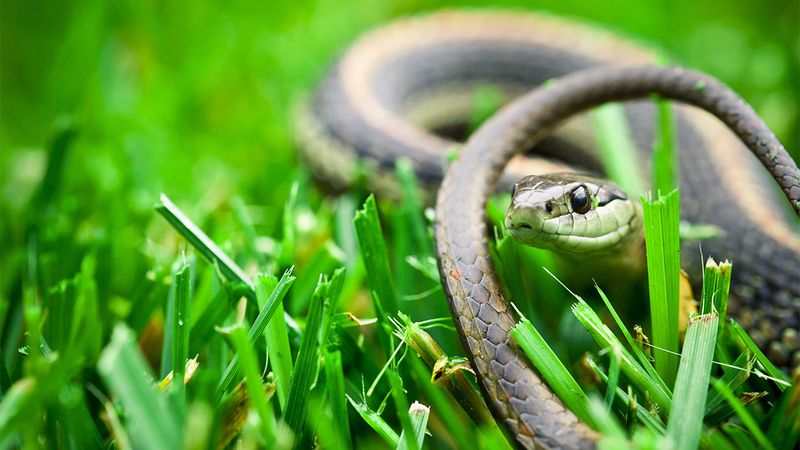
Feeding wildlife encourages a bustling ecosystem that can attract snakes. Animals drawn to food become prey for snakes, increasing their presence in your yard.
To avoid this, refrain from feeding wildlife and clean up any food remnants. Maintaining a balanced ecosystem naturally deters snakes by limiting available prey. This conscious approach reduces the likelihood of snake encounters and promotes a harmonious outdoor environment.
Ignoring Rodent Problems
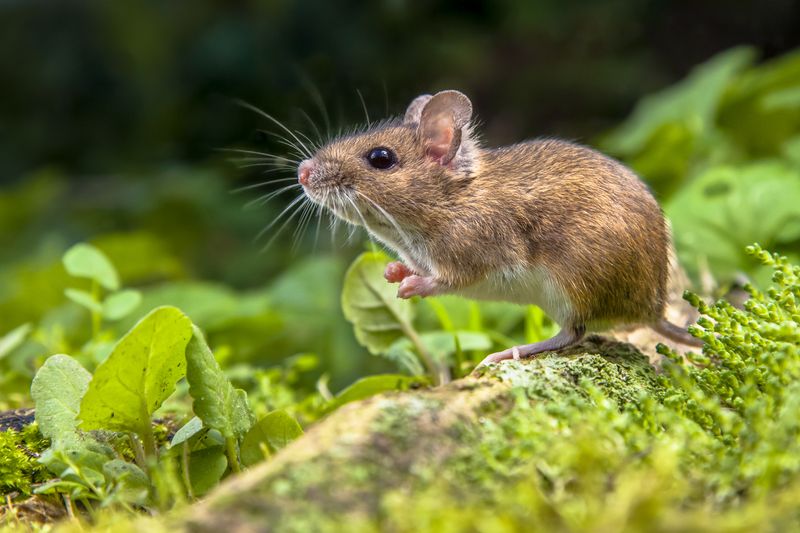
Unchecked rodent problems can lead to an increase in snake activity as rodents are a primary food source. Signs of rodents include burrows, droppings, and gnawed plants.
Implementing rodent control measures, such as traps or professional services, can reduce this risk. Keeping your yard clean and free of debris also deters rodents. By managing rodent populations, you limit the food source for snakes, thereby minimizing their presence.
Neglecting Patio Maintenance
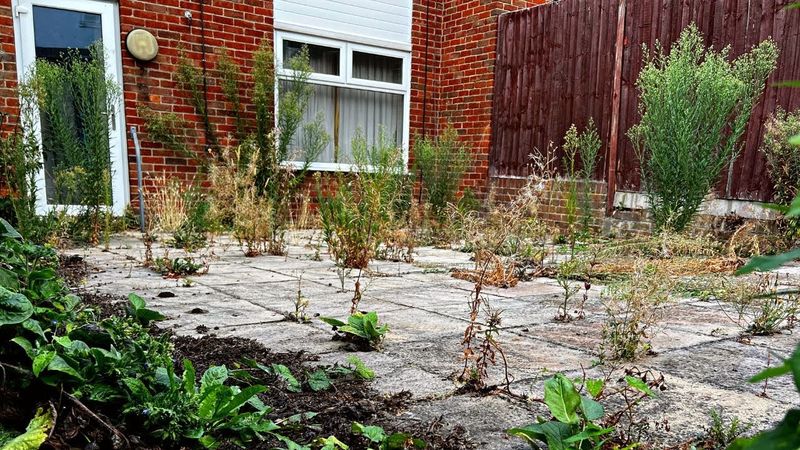
Neglected patios with cracks and debris provide excellent hiding spots for snakes. These areas can accumulate leaves and clutter, making them appealing retreats.
Regularly sweeping and maintaining patio areas, sealing cracks, and removing clutter can prevent snakes from finding refuge. Keeping these spaces clean and orderly not only enhances outdoor aesthetics but also reduces the risk of snake encounters.
Regular maintenance is key to ensuring a safe and welcoming yard.

